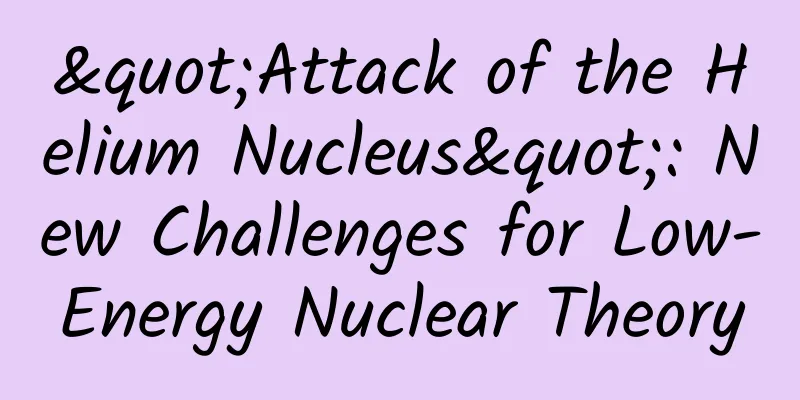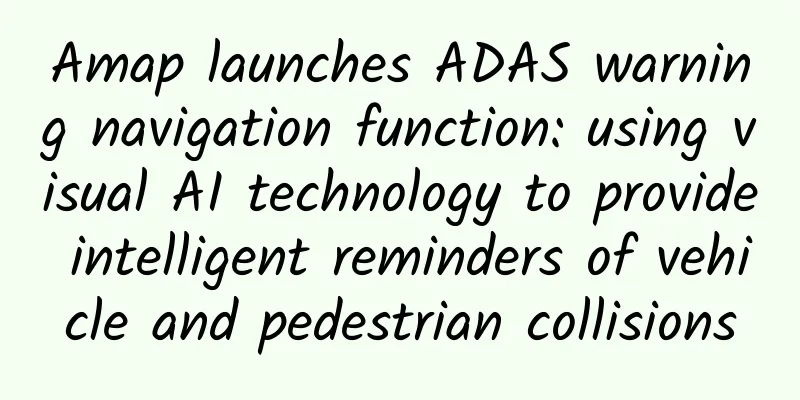"Attack of the Helium Nucleus": New Challenges for Low-Energy Nuclear Theory

|
Helium nuclei (alpha particles) are one of the most familiar nuclei to physicists. Physicists initially proved the existence of atomic nuclei through alpha particle scattering experiments. However, we still do not fully understand it. In a recent scattering experiment of electrons and helium nuclei, researchers found that the electrical form factor of the first excited state of helium nuclei is very different from theoretical predictions. Written by Jiang Lijia (School of Physics, Northwestern University) Recently, scientists measured the form factor of the monopolar transition of helium nuclei from the ground state to the first excited state by inelastic scattering of electrons and helium nuclei at the Mainz Microbeam Accelerator (MAMI). However, when scientists tried to describe this seemingly simple experimental measurement using the extremely successful chiral effective theory in the field of nuclear physics, a large deviation occurred. Why did this problem occur? Was it due to theoretical errors or experimental errors? Resonance state: excited state of an atomic nucleus There are two types of nucleons in the nucleus, protons and neutrons, and there is a strong interaction between nucleons. Similar to the energy levels of electrons, the nucleus also has different energy levels. By absorbing or releasing a certain amount of energy (in the form of photons or other particles), the nucleus can achieve transitions between different energy levels. One of the transitions is the monopolar transition, which refers to a transition in which the quantum number of the nucleus remains unchanged but the charge distribution changes. Helium nuclei, also known as alpha particles, are composed of two protons and two neutrons and are one of the most widely studied atomic nuclei. As shown in Figure 1, during the inelastic scattering process of electron collisions with helium nuclei running on MAMI, helium nuclei transition from the ground state monopole to the fission threshold (19.8 MeV). Intuitively, this excited state that exists beyond the fission threshold is a bit strange, but it is common in the field of nuclear physics - usually called a resonant state. Studying the resonant state produced by this type of monopolar transition is of extraordinary significance for understanding the atomic nucleus. On the one hand, can we explain such an excited state of helium nuclei in theory: is it a collective excited state of a four-nuclear subsystem? Or is it a molecular-like state composed of protons and hydrogen-3 nuclei? It is still unknown. At the same time, the measurement of the resonant state itself can be used as a "magnifying glass" to explore the atomic nucleus, detecting whether some theoretically seemingly "weak" interactions (higher-order terms in perturbation theory) can really be ignored. On the other hand, by measuring the excited state produced by the monopolar transition, an important parameter in the nuclear physics equation of state can also be extracted-the incompressibility (that is, the rigidity of nuclear matter under density changes), which helps scientists better explore novel phenomena such as neutron star mergers. An effective theory describing the nuclear forces The interaction between nucleons is dominated by strong interactions, which can be described by quantum chromodynamics (QCD) in principle. However, at the low energy scale where the nucleon binding energy is located (about tens of MeV), QCD is non-perturbative and difficult to explain nuclear phenomena. How to apply QCD theory to atomic nuclear systems? The introduction of the concept of chiral effective field theory (χEFT) is a major breakthrough in the field of low-energy nuclear physics. S. Weinberg first developed the theoretical framework of χEFT in 1990. In the low-energy case, quarks are confined in nucleons, and the effective degrees of freedom of the system are only mesons and hadrons. Mesons transmit the interactions between nucleons. Based on this, effective Hamiltonians and interaction potentials can be constructed. Currently, χEFT has been successfully and widely applied to various nuclear systems, including two nuclei (NN), three nuclei (3N) and even more nucleons. Electrical form factor In the framework of χEFT, the ground state energy of a helium nucleus with four nucleons can be calculated very accurately. However, the ground state energy is not very sensitive to the details of the nucleon interactions. To conduct a more rigorous test of the theoretically constructed nuclear Hamiltonian, a New experiment gives higher precision The size of the shape factor. Since the theoretical calculations at that time were limited to bound states, the shape factor could not be calculated well. Around 2013, the theory finally developed a technology that could include the continuum effect. It was found that the calculations based on χEFT and phenomenological models were very different from the experimental data. However, due to the low accuracy of the early experimental data and the large error bars, people could not make a strong conclusion about it. They carefully accounted for the background contribution caused by electrons scattering off the aluminum walls of the reaction chamber. To subtract this background, they reduced the density of helium in the reaction chamber to very low levels and measured it separately. This treatment significantly reduced the error bars. As shown in Figure 2, the new high-precision shape factor data are basically consistent with the previous experimental data, while the predictions of current low-energy nuclear physics theories (represented by χEFT) cannot quantitatively explain the experimental data, although they are similar in trend to the experimental data. In particular, the results calculated by χEFT are almost twice as high as the experimental data. Given that the experimental measurement errors can be controlled very well, the inconsistency between theoretical calculations and experimental data suggests that some seemingly weak contributions of nucleon interactions may be amplified in the monopolar transition process when describing nuclear excited states; or, for χEFT, although it has been developed to NNNLO, to explain the first excited state of α particles, The excitation energy of the state (20.2 MeV) is closely related to the two-body fission threshold of helium nuclei (19.8 MeV). Whatever the reason is, it is very interesting and encourages further research. References [1] S. Bacca et al., "Isoscalar monopole resonance of the alpha particle: A prism to nuclear Hamiltonians," Phys. Rev. Lett. 110, 042503 (2013). [2] S. Kegel et al., "Measurement of the -particle monopole transition form factor challenges theory: A low-energy puzzle for nuclear forces?" Phys. Rev. Lett. 130, 152502 (2023). [3] http://physics.aps.org/articles/v16/58#c1 This article is supported by the Science Popularization China Starry Sky Project Produced by: China Association for Science and Technology Department of Science Popularization Producer: China Science and Technology Press Co., Ltd., Beijing Zhongke Xinghe Culture Media Co., Ltd. |
>>: I, an owl, a bird of prey!
Recommend
I told you to send the computer desk too late. Wanda established e-commerce
The full text of the report delivered by Wang Jian...
How to attract traffic to Tik Tok? Practical tips from registration to popularity!
There are many channels for attracting traffic no...
"Tianwen" is launched! my country's planetary exploration mission is officially named "Tianwen"
On the occasion of the fifth China Space Day, the...
Breakthrough Academy "Virtual E-commerce Basics Series" training course video
Course Contents: 1. Cognition: A comprehensive gu...
Why is the market still flocking to Apple Watch despite its sky-high pre-sale prices?
Apple Watch officially started accepting pre-orde...
Some people say that people on a light-speed spaceship will not age, so are human cells still active?
This article is based on answering similar questi...
Xiangshui · Food editing, shooting and operation, script ideas, shooting and editing practice + basic knowledge
Xiangshui · Food editing, shooting and operation,...
First appearance in Huizhou! The "most mysterious bird in the world" is here
Science Fiction Network reported on April 13 (Qin...
Activities, teams, promotions, tools, guaranteed to be the most comprehensive new media operations guide you have ever seen!
The rise of mobile Internet has made the college ...
Thoughts and Experiences from 1800 to 2500
I have been relatively free during this period, s...
Youpengpule: To do TV e-commerce well, we must start with "babies"
As a new medium in the digital age, Internet TV i...
What should we pay attention to when developing the Guiyang Mall mini program? What are the things to pay attention to when developing a shopping mall mini program?
What should we pay attention to when developing t...
A complete operational plan planning idea, take it for free! ! !
Writing a plan is an important skill that must be...
Kill DingTalk? Is this a sad story?
Recently, an article titled "Ma Huateng thre...
The dragon slayer finally turns into a dragon, Apple becomes the biggest obstacle on the road to cloud gaming
As the company with the highest market value in h...







![[Grain Policy of a Great Country] Seafood Factory in the Deep Sea: Digital Technology Continues to “Charge” the Blue Granary](/upload/images/67f1c8322b620.webp)
![[Good article] Two or three points in the planning and operation process of the points mall!](/upload/images/67cc3e12dde6c.webp)
